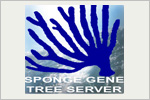Aquatic microbial carbon cycling
Microorganisms influence the composition of the atmosphere, the cycling of elements within and through ecosystems, and the functioning of ecosystems. Microorganisms are also the most metabolically flexible, and the most taxonomically and evolutionarily diverse organisms on Earth. Yet deciphering how that diversity influences biogeochemical processes at larger scales is a challenge, because of the overwhelming complexity of microbial communities makes it difficult to quantify how microbial taxa assimilate and transform elements in the environment.
We use a combination of methods that blend traditions from microbial ecology including stable isotope probing, genomic, and gene expression tools to explore how the diversity and physiology of microorganisms shape the biogeochemistry of marine ecosystems. Our research is derived primarily from field observations, as well as DNA and RNA stable isotope labeling experiments. Our research is primarily focused on the biological and biochemical mechanisms underlying marine microbial loops: the biogeochemical cycling of carbon and its processing through microbial food webs in the ocean.
Key publications
- Einsiedl F, Wunderlich A, Sebilo M, Coskun ÖK, Orsi W, Mayer B (2020) Biogeochemical evidence of anaerobic methane oxidation and anaerobic ammonium oxidation in a stratified lake using stable isotopes. Biogeosciences (accepted) doi.org/10.5194/bg-2020-18.
- Ortega-Arbulu AS, Pichler M, Vuillemin A, Orsi W* (2019) Effects of organic matter and low
oxygen on the mycobenthos in a coastal lagoon. Environmental Microbiology 21: 374-388. - Coskun OK, Pichler M, Vargas S, Gilder S, Orsi W* (2018) Linking uncultivated microbial populations with benthic carbon turnover using quantitative stable isotope probing. Applied and Environmental Microbiology 84(18): e01083-18.
- Orsi W*, Wilken S, del Campo J, Heger T, James E, Richards TA, Keeling PJ, Worden AZ, Santoro AE (2018) Identifying protist consumers of photosynthetic picoeukaryotes in the surface ocean using stable isotope probing. Environmental Microbiology 20, 815-827
- Orsi W*, Smith JM, Liu S, Liu Z, Sakamoto CM, Wilken S, Poirier C, Richards TA, Keeling PJ, Worden AZ, Santoro AE (2016) Diverse, uncultivated bacteria and archaea underlying the cycling of dissolved protein in the ocean. The ISME Journal 10, 2158-2173. [Recommended by Faculty of 1000]
- Orsi W*, Smith JM, Wilcox HM, Swalwell JE, Carini P, Worden AZ, Santoro AE (2015). Ecophysiology of uncultivated marine euryarchaea is linked to particulate organic matter. The ISME Journal 9: 1747-1763.
- Santoro AE, Dupont CL, Richter RA, Craig MT, Carini P, McIlvin MR, Yang Y, Orsi W, Moran D, Saito MA (2015). Genomic and proteomic characterization of ‘Candidatus Nitrosopelagicus brevis’: an ammonia-oxidizing archaeon from the open ocean. PNAS 114:1173-1178.
- Orsi W*, Song Y, Hallam S, Edgcomb V. (2012). Effect of oxygen minimum zone formation on communities of marine protists. The ISME Journal 6: 1586-1601.
- Orsi W*, Edgcomb V, Faria J, Foissner W, Fowle W, Hohmann T, Suarez S, Taylor C, Taylor GT, Vdacny P, Epstein S. (2012). Class Cariacotrichea, a novel ciliate taxon from the anoxic Cariaco Basin, Venezuela; International Journal of Systematic and Evolutionary Microbiology 62: 1425-1433.
- Orsi W*, Edgcomb V, Jeon S O, Leslin C, Bunge J, Taylor G T, Varela R, Epstein S. (2011). Protistan microbial observatory in the Cariaco Basin, Caribbean. Part II. Habitat specialization. The ISME Journal 5:1344-1356.
Cooperations
Ozeanographische Forschungsfahrt "EreBUS"
https://www.ldf.uni-hamburg.de/meteor/wochenberichte.html





